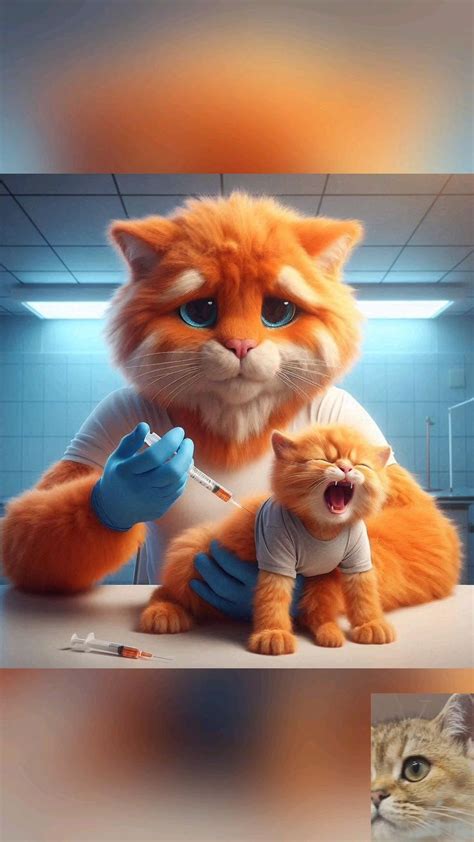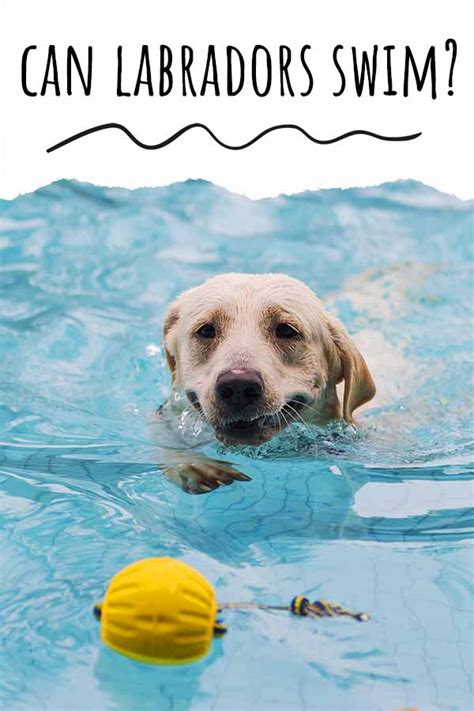
A feline, seemingly fed up with canine antics, has instigated a domestic “martial law,” captivating the internet with its purported power play.
The viral TikTok video, posted by user @sashimithepom, showcases a cat perched atop a dog crate, seemingly overseeing the canine occupant. The video’s caption humorously declares the cat has “declared martial law” due to the dog’s disruptive behavior, amassing over 5.8 million views and sparking widespread amusement and commentary across social media platforms. The video presents a humorous take on interspecies dynamics within a household, resonating with pet owners familiar with the challenges of managing different animal personalities.
The clip, which has garnered over 760,000 likes and thousands of comments, depicts a fluffy feline strategically positioned to monitor the dog confined within the crate. The video’s overlay text reads, “When the cat has HAD IT with the dog’s shenanigans, so she declared martial law.” The footage offers a glimpse into the power dynamics within the household, portraying the cat as the enforcer of order and the dog as the subject of its disciplinary actions. The cat’s posture and gaze convey a sense of authority, further amplifying the comedic effect of the scenario.
Social media users have reacted with amusement and shared anecdotes of their own pets’ dominance displays. Many commenters expressed their understanding of the cat’s exasperation, recounting similar experiences with their own canine companions. Some users playfully speculated on the cat’s demands and the dog’s alleged offenses, contributing to the lighthearted tone of the online conversation. The video has sparked a discussion about the often-unpredictable relationships between cats and dogs, highlighting the unique challenges and humorous moments that pet owners often encounter.
The viral video serves as a reminder of the diverse personalities and complex social dynamics that can exist within multi-pet households. While the concept of a cat declaring martial law is clearly a humorous exaggeration, the video resonates with pet owners who have witnessed similar displays of dominance and control among their furry companions. The clip also underscores the power of social media to transform everyday pet interactions into viral sensations, captivating audiences with relatable and humorous content.
The Back Story
The TikTok video, which is 14 seconds long, showcases a white fluffy cat sitting on top of what appears to be a dog crate, looking down at the dog inside. The video is captioned, “When the cat has HAD IT with the dog’s shenanigans, so she declared martial law.” The audio used in the video is a dramatic instrumental piece, further emphasizing the comedic effect of the scenario. The video uses overlay text to communicate to the audience the situation, the cat, in the poster’s point of view, has enough of the dog’s actions and decided to act like a strict ruler within the space. The video concludes with the cat continuing its surveillance, its gaze fixed on the dog below, as if ensuring compliance with its newly imposed regulations.
Social Media Reaction
The video received widespread attention, garnering over 5.8 million views, 760,000 likes, and thousands of comments. The comment section is filled with users expressing their amusement and sharing their own experiences with pets establishing dominance. One user commented, “The cat is like, ‘You will respect the law and order of this house!'” Another user wrote, “My cat does the same thing. She thinks she’s the boss of the whole house.” Some users even jokingly speculated about what the dog might have done to provoke the cat’s actions, adding to the playful atmosphere surrounding the video. The video’s success can be attributed to its relatable depiction of pet behavior and the humorous way it portrays the dynamics between cats and dogs.
Expert Opinion
While the video is intended to be humorous, animal behaviorists note that such displays of dominance are not uncommon in multi-pet households. Cats, in particular, are known for their territorial nature and may assert dominance over other pets in the household. According to Dr. Sarah Wooten, a veterinary expert, “Cats often use height to their advantage, as it gives them a better vantage point and allows them to feel more in control of the situation.” The cat in the video, by positioning itself on top of the dog crate, is likely asserting its dominance and establishing its position within the household hierarchy. However, it is important to ensure that such displays of dominance do not escalate into aggression or cause undue stress for the other pets involved.
Further Analysis
The video also highlights the growing trend of pet owners sharing their pets’ antics on social media. Platforms like TikTok have become a hub for pet-related content, with users sharing humorous videos, heartwarming stories, and helpful tips on pet care. These videos often go viral, attracting millions of views and creating online communities of pet lovers. The “Cat Boss” video is just one example of how social media can amplify everyday pet interactions, turning them into viral sensations. The widespread appeal of such content suggests that pet owners are eager to share their experiences and connect with others who understand the unique joys and challenges of pet ownership. The trend also reflects the growing recognition of pets as integral members of the family, whose lives and experiences are worthy of sharing and celebrating.
The popularity of the video also touches on the broader cultural fascination with animal behavior and the human tendency to anthropomorphize pets. By attributing human-like qualities and motivations to the cat, viewers can project their own experiences and emotions onto the animal, creating a sense of connection and understanding. This anthropomorphism, while not always scientifically accurate, can enhance the enjoyment of pet-related content and foster a deeper appreciation for the complex lives of animals.
Preventative measures and ensuring pet harmony.
The video also raises some considerations for maintaining harmony in multi-pet households. While the cat’s behavior in the video appears to be playful, it is important for pet owners to monitor their pets’ interactions and intervene if necessary to prevent aggression or stress. Providing each pet with its own resources, such as food bowls, water bowls, and resting areas, can help to reduce competition and promote a sense of security. Additionally, ensuring that each pet receives adequate attention and playtime can help to prevent boredom and frustration, which can sometimes lead to behavioral problems. Consulting with a veterinarian or animal behaviorist can also be helpful in addressing specific behavioral issues and developing strategies for managing inter-pet dynamics.
The “Cat Boss” video has not only provided a moment of amusement for millions of viewers but has also sparked a conversation about pet behavior, social media trends, and the human-animal bond. As pet ownership continues to rise and social media platforms continue to evolve, it is likely that we will see even more pet-related content going viral, capturing the hearts and minds of audiences around the world.
The Broader Context of Pet Behavior and Social Media
The incident also highlights a broader trend: the increasing anthropomorphism of pets on social media. Viewers project human emotions and motivations onto the cat, interpreting its actions as a deliberate power play. This anthropomorphism, while often harmless, can influence how people perceive and interact with their pets. It’s important to remember that while pets may exhibit behaviors that resemble human actions, their motivations are often rooted in instinct and environmental factors.
The video’s virality also speaks to the power of social media to amplify everyday occurrences. A simple 14-second clip of a cat and dog has resonated with millions, demonstrating the platform’s ability to connect people through shared experiences and humor. This phenomenon raises questions about the role of social media in shaping our perceptions of pet ownership and animal behavior.
Moreover, the video subtly touches on the responsibilities of pet ownership. While the “martial law” declaration is presented humorously, it underscores the importance of creating a balanced and harmonious environment for all pets in a household. Owners have a duty to address behavioral issues, manage inter-pet dynamics, and ensure the well-being of their animals.
The Science of Cat and Dog Dynamics
The relationship between cats and dogs is often portrayed as one of inherent conflict, but the reality is far more nuanced. While their natural instincts and communication styles differ, cats and dogs can coexist peacefully and even form strong bonds.
Cats are typically solitary hunters, while dogs are pack animals. This fundamental difference influences their social behavior. Cats communicate through subtle body language, scent marking, and vocalizations, while dogs rely more on vocal communication and physical interaction. These differences can lead to misunderstandings and conflicts if not properly managed.
However, with proper socialization and training, cats and dogs can learn to understand and respect each other’s boundaries. Introducing them gradually, providing separate spaces, and rewarding positive interactions can help to foster a harmonious relationship. The key is to create an environment where both animals feel safe, secure, and valued.
The Rise of Pet Influencers and Viral Pet Content
The “Cat Boss” video is part of a larger trend of pet-related content going viral on social media. From adorable puppies to quirky cats, pets have become major influencers, amassing large followings and generating significant engagement.
This phenomenon is driven by several factors:
- Emotional Connection: Pets evoke strong emotions in people. Their innocence, loyalty, and unconditional love resonate deeply, making them ideal subjects for heartwarming and engaging content.
- Relatability: Pet owners can easily relate to the challenges and joys of caring for animals. Viral pet videos often capture everyday moments that resonate with a wide audience.
- Humor: Pets are often unintentionally funny. Their quirky behaviors and reactions provide endless fodder for comedic content.
- Visual Appeal: Pets are visually appealing. Their cute faces, fluffy fur, and playful antics make them highly photogenic and video-friendly.
The rise of pet influencers has created new opportunities for businesses in the pet industry. Brands are increasingly partnering with pet influencers to promote their products and services. This trend is expected to continue as social media platforms become increasingly central to the pet owner experience.
Long-Term Implications and Considerations
The “Cat Boss” video, while seemingly lighthearted, raises important questions about the human-animal bond, the role of social media in shaping our perceptions of animals, and the responsibilities of pet ownership.
As pet ownership becomes increasingly prevalent, it’s crucial to promote responsible pet ownership practices, including proper socialization, training, and veterinary care. It’s also important to be mindful of the potential for anthropomorphism to distort our understanding of animal behavior.
Social media can be a powerful tool for connecting pet owners and sharing valuable information. However, it’s important to be critical of the content we consume and to avoid perpetuating harmful stereotypes or misinformation.
Ultimately, the “Cat Boss” video serves as a reminder of the complex and multifaceted relationship between humans and animals. By understanding the nuances of animal behavior, promoting responsible pet ownership, and using social media responsibly, we can ensure that our relationships with our pets are mutually beneficial and enriching.
The Importance of Positive Reinforcement
In situations where there is tension between cats and dogs, it’s crucial to use positive reinforcement techniques to encourage positive interactions. This involves rewarding desired behaviors, such as calm coexistence, with treats, praise, or attention.
Punishment, on the other hand, can be counterproductive and can actually worsen the relationship between the animals. Punishment can create fear and anxiety, which can lead to aggression or avoidance.
Positive reinforcement helps to create a positive association between the animals, making them more likely to interact peacefully in the future. It also strengthens the bond between the pet owner and the animals, fostering a sense of trust and security.
Creating a Safe and Enriching Environment
Providing a safe and enriching environment is essential for the well-being of all pets in a household. This includes:
- Separate Spaces: Cats and dogs should have their own designated spaces where they can retreat to feel safe and secure. This can include separate beds, crates, or rooms.
- Vertical Space: Cats especially benefit from vertical space, such as cat trees or shelves, which allow them to climb and observe their surroundings from a high vantage point. This can help them to feel more in control and less threatened.
- Enrichment Activities: Providing enrichment activities, such as toys, puzzles, and scratching posts, can help to reduce boredom and stress, which can contribute to behavioral problems.
- Regular Exercise: Regular exercise is important for both cats and dogs. Exercise helps to burn energy, reduce stress, and promote physical and mental well-being.
By creating a safe and enriching environment, pet owners can help to reduce tension between cats and dogs and promote a harmonious relationship.
Understanding Cat Communication
Cats communicate in a variety of ways, including:
- Body Language: Cats use their body language to communicate their mood and intentions. For example, a cat that is relaxed and comfortable will often have its tail up, its ears forward, and its eyes half-closed. A cat that is fearful or aggressive will often have its tail down, its ears back, and its eyes wide open.
- Scent Marking: Cats use scent marking to establish their territory and communicate with other cats. They do this by rubbing their faces against objects, scratching surfaces, and spraying urine.
- Vocalizations: Cats use a variety of vocalizations to communicate, including meows, purrs, hisses, and growls.
Understanding cat communication is essential for interpreting their behavior and responding appropriately. It’s also important to avoid misinterpreting cat behavior, which can lead to misunderstandings and conflicts.
By learning to read cat body language, scent marking, and vocalizations, pet owners can better understand their cats’ needs and emotions and can create a more harmonious relationship with them.
Addressing Behavioral Issues
If cats and dogs are experiencing behavioral issues, such as aggression, anxiety, or excessive vocalization, it’s important to seek professional help from a veterinarian or certified animal behaviorist.
A veterinarian can rule out any underlying medical conditions that may be contributing to the behavioral issues. An animal behaviorist can assess the animals’ behavior and develop a treatment plan that addresses the specific issues.
Treatment plans may include medication, behavior modification techniques, and environmental changes. It’s important to follow the treatment plan closely and to be patient, as it may take time to see results.
By addressing behavioral issues early on, pet owners can help to prevent them from escalating and can improve the quality of life for their cats and dogs.
The Role of Socialization
Socialization plays a critical role in shaping an animal’s behavior and ability to interact with others. Proper socialization involves exposing animals to a variety of people, places, and experiences during their early development.
For cats, socialization typically occurs during the first few weeks of life. Kittens that are well-socialized are more likely to be friendly and confident around people and other animals.
For dogs, socialization should begin as early as possible, ideally between 3 and 16 weeks of age. Puppies that are well-socialized are less likely to develop fear-based aggression or anxiety.
Proper socialization can help to prevent behavioral problems and can improve an animal’s overall well-being.
The Importance of Patience and Understanding
Ultimately, creating a harmonious relationship between cats and dogs requires patience, understanding, and a willingness to learn. It’s important to remember that cats and dogs are different species with different needs and communication styles.
By taking the time to understand their behavior, providing a safe and enriching environment, and using positive reinforcement techniques, pet owners can help to create a loving and supportive home for all their animals.
The viral “Cat Boss” video may be humorous, but it also serves as a reminder of the responsibilities of pet ownership and the importance of fostering positive relationships between animals. By embracing these responsibilities and promoting understanding, we can create a better world for all our furry companions.
FAQ:
1. Is the “martial law” declaration real? The declaration is a humorous exaggeration made by the TikTok user to describe the cat’s dominant behavior. While cats can exhibit dominance, it’s not a literal declaration of martial law, but a comical way to view the situation.
2. What does it mean when a cat sits on top of a dog crate? It could mean several things. The cat may be asserting dominance, claiming the crate as its territory, or simply finding a comfortable vantage point. Animal behaviorists suggest height gives cats a sense of control. It’s important to observe the cat’s body language and the dog’s reaction to understand the dynamic.
3. How can I prevent conflict between my cat and dog? Several strategies can minimize conflict: Introduce them gradually, provide separate spaces and resources (food, water, beds, litter boxes), reward positive interactions with treats, and ensure both pets receive adequate attention and playtime. If issues persist, consult a veterinarian or animal behaviorist.
4. Why are pet videos so popular on social media? Pet videos tap into our emotional connection with animals. They are often relatable, humorous, and visually appealing, showcasing the quirks and cuteness of our furry companions. Social media provides a platform for sharing these experiences and connecting with other pet lovers.
5. Is it okay to anthropomorphize my pets? While attributing human-like qualities to pets is common and can be harmless, it’s important to remember that their motivations are often rooted in instinct. Excessive anthropomorphism can distort our understanding of their behavior and lead to unrealistic expectations. It’s best to understand their species-specific needs and communicate with them accordingly.









